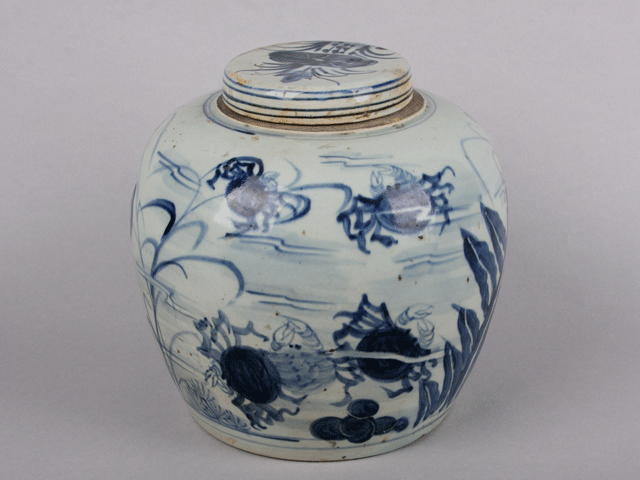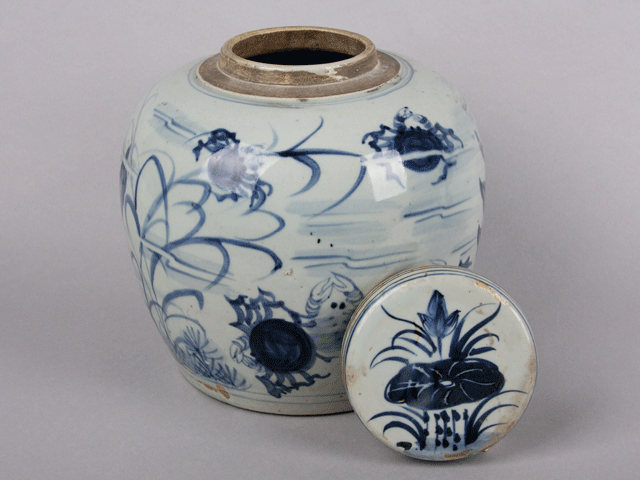
2012.91.116, ginger jar; Qing dynasty, early A.D. 1800s
Eason Eige Collection; Photo by B. Bernard

2012.91.116, ginger jar; Qing dynasty, early A.D. 1800s
Eason Eige Collection; Photo by B. Bernard
Ginger jars were first used to transport spices (including ginger, of course) but in time, demand for the jars themselves led to the production and export of empty jars. The water scene on the side of the jar can be appreciated for its own sake, but in Chinese culture crabs can also be a symbol of harmony. In ancient times, crabs could also reflect the desire to achieve high scores on the exams for much-coveted civil service positions. As is often the case, the additional meanings are based on puns; the word for crab and the word for harmony sound the same, for example.
To see a different part of the watery scene, please click
here. The image below shows the jar with
the lid removed. The jar and lid don't quite match, but that's not surprising;
in ancient China, ceramic vessels and their lids often were produced in
separate workshops, and were matched after the fact.

Photo by B. Bernard
See source code for copyright information. Page last revised on
February 29, 2016.
Please report problems to toh@unm.edu